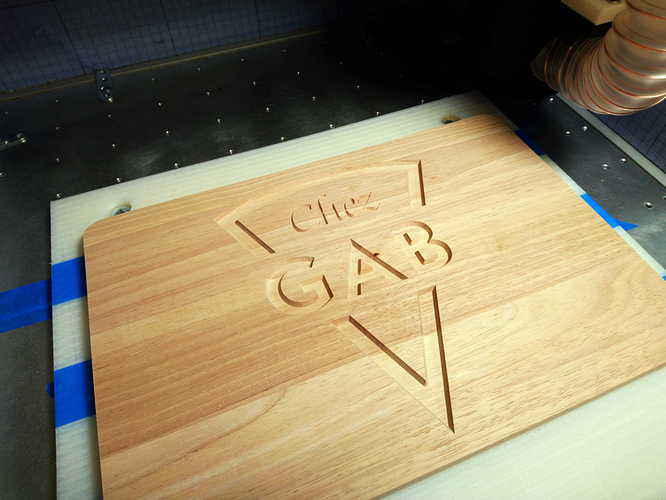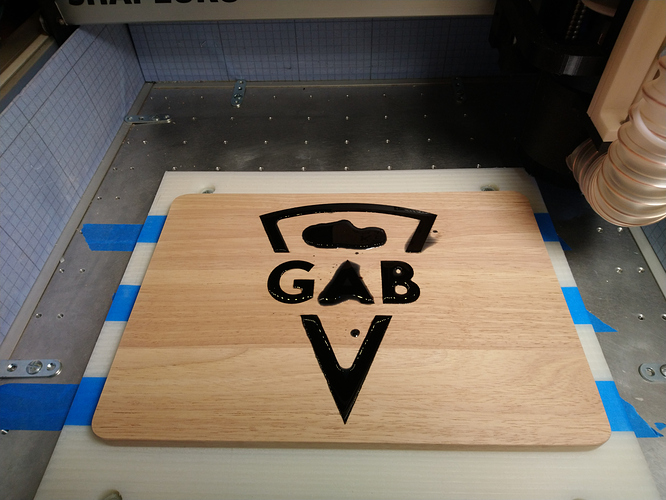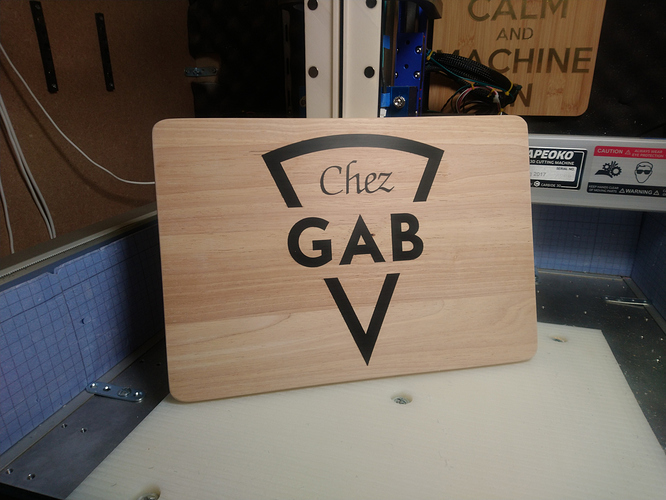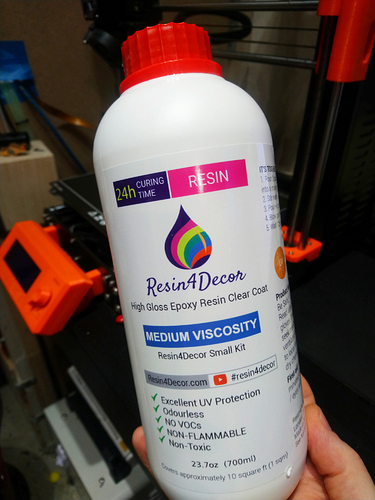What do you do when you end up having to make 4 custom gifts for friends and family and only have a few days to do so ? I go to “basic” mode and challenge myself to do the simplest, fastest, lowest-amount-of-post-processing thing.
Step 1: grab a cutting board, surface it, V-carve it (with some text that will draw the attention away from the lack of any other fancy finishing details, because once people see their name on anything, their brain goes to the “it’s so cool!” zone, and those nice but barely-visible chamfers you spent time adding will go unnoticed anyway  ):
):
Spray/paint a layer of lacquer on that raw cut to seal the wood, then get the epoxy bottles, drop loads of coloring in the mix, such that it’s fully opaque and the subtle cutting marks at the bottom of the carve won’t matter. Pour it while the piece is still in the machine, torch the surface to kill bubbles, let dry overnight (in the summer…)
While the piece is still in the machine, run a surfacing pass to remove the extra epoxy:
then do the (unavoidable…for now) sanding passes manually, down to 320 grit or so:
Finally oil the thing (I use the food safe stuff from Ikea), and call it done.
(side note: despite the lacquer layer before pouring the epoxy, I still had some (barely noticeable) bleeding, but for some reason the oil finishing made it even less visible)
Phew, 24h gone, one down, three other projects to go.





 . The stuff I tried is really low viscosity, didn’t know there were different sorts for that.
. The stuff I tried is really low viscosity, didn’t know there were different sorts for that.